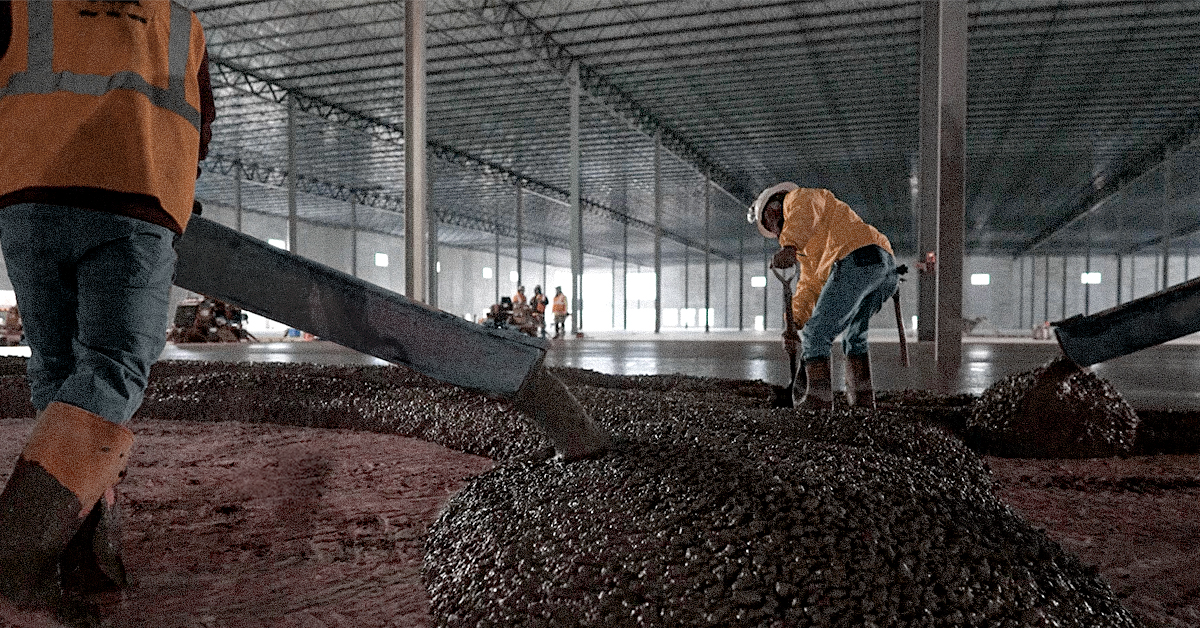
How Weather in Northern Illinois Affects Commercial Concrete Projects
Concrete is one of the most durable and versatile materials in commercial construction. But in Northern Illinois, weather conditions can have a major impact on how concrete performs. Seasonal temperature swings, moisture, and freeze-thaw cycles all influence project schedules, curing, and long-term durability. Understanding how to manage challenges, and using new technology, can help ensure every project stands the test of time.
Understanding the Challenge
Concrete gains strength as it cures, but that process depends heavily on temperature and moisture. In Northern Illinois, the construction season brings a wide range of conditions. Hot summers accelerate curing and increase the risk of cracking. Cold winters, on the other hand, slow the curing process and can even cause the mix water to freeze before the concrete sets properly.
Illinois concrete construction seasons are carefully planned. Most large pours happen in spring through early fall, when weather conditions are more predictable. With proper technique, concrete in cold weather is possible. The key is preparation and control.
Managing Cold Weather Concrete Work
During the colder months, contractors use several proven methods to protect concrete and maintain quality. Heated enclosures, thermal blankets, and warm water mixes help concrete cure evenly despite the temperature. These techniques prevent the early freezing that can weaken the material.
Understanding weather and concrete curing is critical. If the temperature drops below freezing before the concrete gains enough strength, it can lose durability over time. Contractors must closely monitor weather forecasts, adjust mix designs, and use proper curing materials to keep the process stable.
Moisture also plays a role in the curing process. Snow and ice can introduce extra water into the mix or onto the surface, affecting finish quality. Maintaining clean, dry work areas is essential for achieving strong, consistent results.
The Freeze-Thaw Cycle and Long-Term Durability
The Midwest’s freeze-thaw cycles can be particularly harsh on commercial concrete durability. When water seeps into small cracks or pores and freezes, it expands—creating pressure that weakens the structure. Over time, repeated cycles can cause scaling, cracking, or surface damage.
To combat this, many Northern Illinois contractors use air-entrained concrete. The tiny air bubbles in the mix give expanding water space to move, reducing pressure and preventing cracking. Sealers, proper drainage, and consistent maintenance further protect concrete surfaces throughout the year.
New Technology Supporting Year-Round Construction
Modern technology is changing how the industry approaches these challenges. Emerging tools and materials help contractors maintain high quality and efficiency, even when weather conditions are less than ideal.
Smart sensors now monitor temperature and humidity within concrete as it cures. These real-time insights help contractors adjust conditions on the job site, improving accuracy and reducing delays. High-performance mix designs are also being developed. They will improve strength gain at low temperatures and shorten overall curing times.
In addition, advanced admixtures are helping extend the Illinois concrete construction season. Cold-weather additives accelerate hydration, allowing work to continue later in the year without sacrificing quality. These technologies improve productivity and help clients avoid costly seasonal downtime.
Design Trends for Durable, Efficient Structures
Beyond weather management, design innovation is shaping the future of concrete construction. Contractors and engineers are using more sustainable materials and methods that enhance both performance and appearance.
Fiber-reinforced mixes increase toughness and reduce the need for steel reinforcement in some applications. High-performance coatings improve surface protection and lower long-term maintenance costs. Meanwhile, 3D modeling and digital planning tools allow project teams to anticipate weather-related risks before work begins.
These innovations support greater efficiency and reliability for clients. Staying updated on new products and methods ensures each structure meets modern standards for strength, sustainability, and longevity.
Why It Matters for Clients
For building owners, developers, and general contractors, understanding the connection between weather and concrete curing is more than a technical detail—it’s a matter of value. Projects that account for Northern Illinois weather perform better and last longer. Choosing a contractor that uses advanced technologies and weather-smart techniques protects your investment and reduces risk.
For concrete to endure, success starts with proper planning. By leveraging new tools and staying ahead of design trends, today’s professionals are redefining what’s possible in the region’s challenging climate.
Final Thoughts
Northern Illinois’ weather will always pose challenges for concrete construction. But with expertise, technology, and proactive planning, those challenges become opportunities for innovation. From managing concrete in cold weather to enhancing commercial concrete durability, the future of construction in Illinois is stronger than ever.